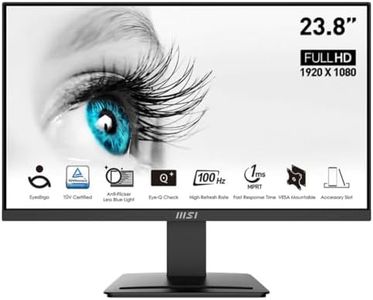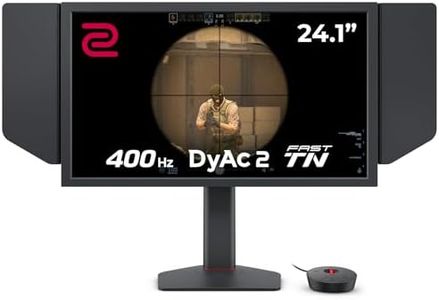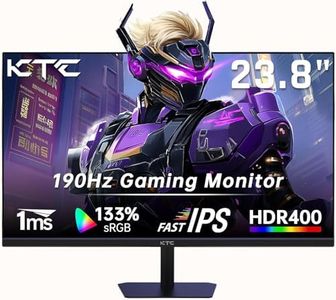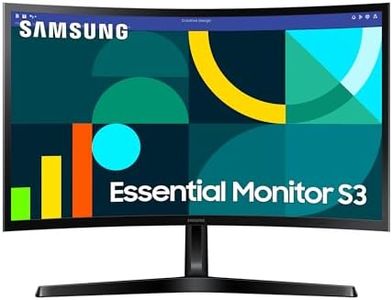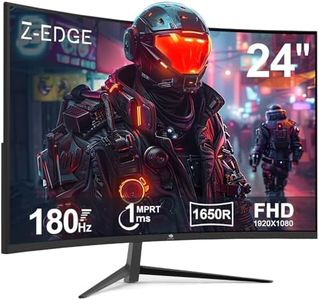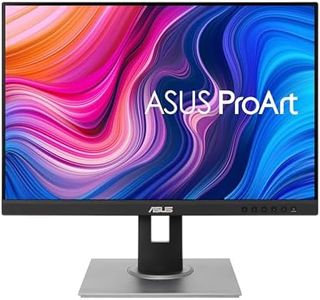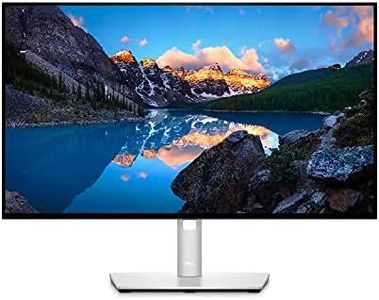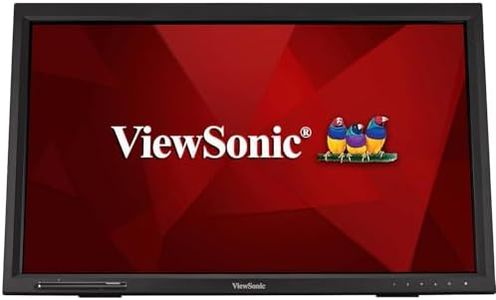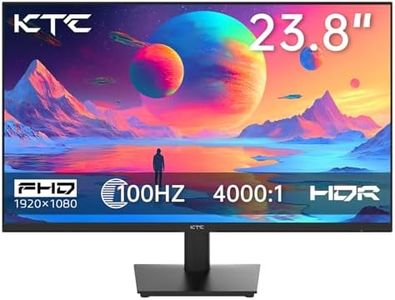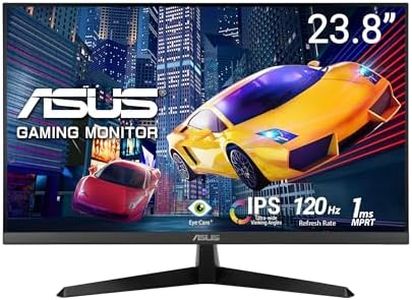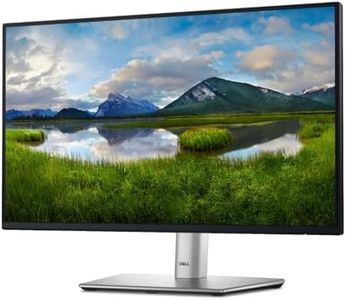We Use CookiesWe use cookies to enhance the security, performance,
functionality and for analytical and promotional activities. By continuing to browse this site you
are agreeing to our privacy policy
10 Best 24 Inch Monitors
From leading brands and best sellers available on the web.Buying Guide for the Best 24 Inch Monitors
When you're choosing a 24-inch monitor, the goal is to find one that fits both your workspace and your viewing needs. Whether you're using it for work, play, or creative projects, knowing what to look for beyond screen size will help ensure you get the most comfort and value. Think about how you use your computer daily—do you browse the web, watch videos, edit photos, or play games? Answering that will help guide which monitor features are most important for you.ResolutionResolution refers to the number of pixels displayed on the screen, usually described as width x height (for example, 1920x1080). This is important because a higher resolution can display sharper and more detailed images. Most 24-inch monitors come with Full HD (1920x1080) resolution, which is generally sharp enough for everyday tasks and casual entertainment. If you're doing design work or want even crisper visuals, you might consider monitors with higher resolutions. For basic use, Full HD is suitable; for more detailed work, seek out higher options if available.
Panel TypeThe panel type determines how the screen displays colors and how wide the viewing angles are. The main types are IPS, TN, and VA. IPS panels offer the best color accuracy and viewing angles, making them great for photo and video editing as well as general use. TN panels can be more responsive with faster refresh rates, making them better for fast-paced gaming, but colors and angles are not as good. VA panels have strong contrast, showing deeper blacks, which is nice for movies. Choose IPS for color work or all-around performance, TN for gaming speed, and VA if you like richer blacks and deeper contrast.
Refresh RateRefresh rate is how often the image on the screen updates per second, measured in hertz (Hz). A standard refresh rate is 60Hz, which is fine for most tasks like browsing and working. Monitors with higher refresh rates, such as 75Hz, 120Hz, or 144Hz, provide smoother visuals and are especially helpful if you play games with lots of motion. If you mainly use your computer for work or streaming, 60Hz is adequate. For gaming or smoother animation, look for higher refresh rates.
Response TimeResponse time measures how quickly a pixel changes from one color to another, usually in milliseconds (ms). A lower response time reduces motion blur in fast-moving scenes. Most people won't notice the difference for regular use, but for gaming or fast video playback, a response time of 5ms or less is typically desirable. If you just use your monitor for everyday tasks, response time isn’t a major concern.
ConnectivityConnectivity options refer to the types of ports available on the monitor, such as HDMI, DisplayPort, VGA, or USB-C. These matter because you'll need to connect your monitor to your computer or other devices. HDMI is the most common for modern devices, while DisplayPort can offer some extra features for gaming or professional setups. USB-C is handy for newer laptops. Check which ports your computer supports and make sure the monitor matches, or you may need an adapter.
Ergonomics and AdjustabilityThis spec refers to how much you can adjust the monitor's position—such as height, tilt, swivel, and pivot. Good ergonomic adjustability can help prevent neck or eye strain, especially if you work at your desk for long periods. For basic setups, tilt adjustment is usually enough. If you want more comfort or have specific desk space needs, look for monitors with more movement options.
Color AccuracyColor accuracy affects how true-to-life the colors appear on your monitor. This is particularly important for tasks like photo editing or design work. Monitors designed for general use are usually acceptable, but if you're doing any creative work, check for ones that mention high color accuracy or specific coverage of color gamuts (such as sRGB or Adobe RGB). For everyday browsing and office work, this spec isn't critical.
Built-in FeaturesSome 24-inch monitors come with extra features like built-in speakers, USB hubs, or blue light filters. Built-in speakers can save space if you don't want extras on your desk, but they're usually basic in quality. Blue light filters or flicker-free technology can make long sessions more comfortable for your eyes. Think about what convenience features matter to you and whether they'll add value to your setup.
